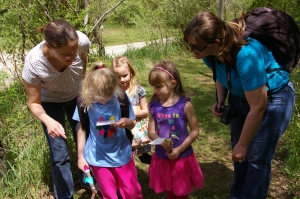The key to success: GRIT!
What is grit and why is it so important to our (and our girls’) success? Grit is a combination of persistence and resilience that is not related to talent or IQ. People with grit can accomplish things that seem almost impossible.
We all know them. The girl who refuses to give up on the high ropes course (despite her fear of heights) and finally (after multiple attempts and falls) conquers the course and her fear. The leader who sticks with her girls (through their hard middle school drama years) supporting them and coaching them until they grow into passionate adults who know they have the skills and the work ethic to make a difference in the world. These women and girls all have one thing in common. It’s not their natural talent or their high IQ. Rather it’s their work ethic and ability to roll with the punches: they are gritty!
So how do we build grit in our girls? According to a study at Stanford University the answer is: Mindset! What’s that? The Thrive Foundation defines mindset as “an attitude toward your own abilities, be they intelligence, skills, talents, or aptitudes.” According to Dr. Carol Dweck there are 2 main mindsets:
- The fixed mindset: You believe that your personal qualities are fixed and that you have been given only a certain amount of talent, intelligence, ability, and/or character. You are either good or bad. Have a lot or a little. You can improve around the edges, but either you have it or you don’t.
- The growth mindset: You believe that your personal qualities are things you have worked hard to establish including talent, intelligence, ability, and/or character. You believe that although many people differ in the initial amount of talent, aptitudes, and abilities, everyone can change and grow through hard work and experience. (Dweck 2006)
The growth mindset by another name could be called learning by doing (experiential learning). It says the more I practice, the harder I try (and fail), the more I grow and the more successful I become. This is a pillar of the Girl Scout program and having this growth mindset (being gritty) directly contributes to success. The Thrive Foundation (and Girl Scouts) believes that caring adults “can help youth acquire a growth mindset through modeling it in their own lives and encouraging youth to work hard to improve their abilities, including their intelligence, their moral character, their talents and their interests.” Can we be that role model? Can we be gritty for our girls? We think we can. Let’s help our girls grow up with grit by showing them the way!








